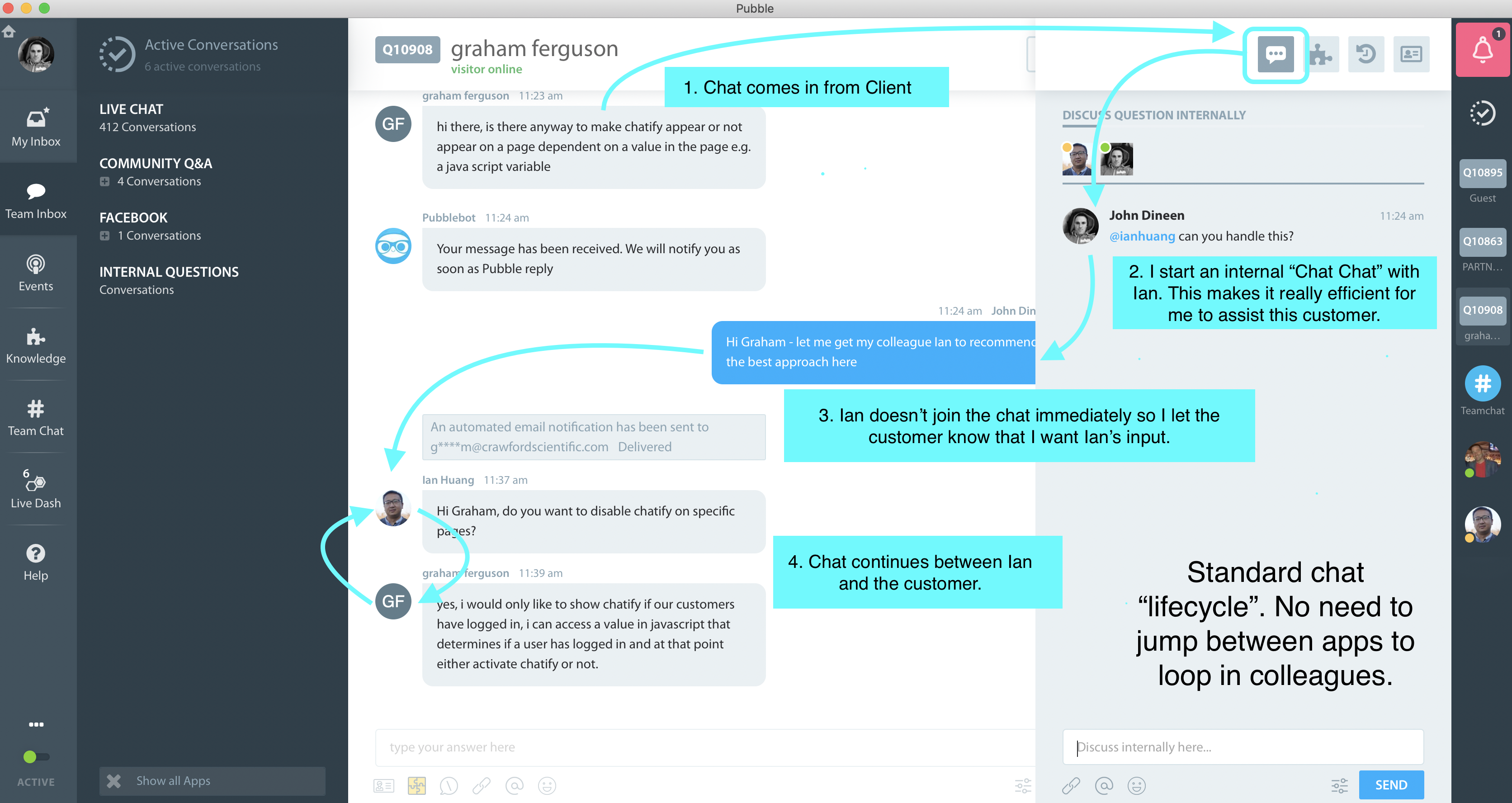This type of thinking is a result of two things:
- How traditional live chat software works
- Per agent billing models
We need to reset this type of thinking because it just does not match how modern customer support works. Customer support is delivered by teams. Having your team accessible without needing to jump between apps makes the customer support process easier. Let me explain.
Traditional live chat software was modelled on the telephone systems:
Phone rings, someone answers it, conversation happens. No one answers, no conversation.
It was pretty binary. But also very limiting. The thinking was that Live chat only offered value if the chat happened right there. If there was no agent available, no chat was possible. It was “live” or nothing.
This led to a business model where live chat software providers charged per seat (or per operator, same thing). Obviously, businesses looked to limit the costs of live chat and would purchase licences, ONLY, for staff that were chatting directly with their customers. Everyone else operated outside of the live chat software.
It’s not that customer support suddenly discovered the importance of teams. It’s always been the case that customer support extended far beyond the “live chat agents”. It’s just that they relied on a patchwork of tools, to loop in those, who’s support they needed.
“I’ll email John.”
“Let me call Ian.”
“I’ll ping Shane on Skype,” etc.
This is what we have been working to address in Chatify. We need to get people to stop thinking that the “live chat software is for the live chat agents” and start thinking Chatify is how our team supports our customers“.
Let me give you a quick example of how a team collaborates on Chatify to support their customers. Take a look at:

One of the key differences here – that promotes the correct client behaviour – is that our business model is not “per seat” based. This means that you can add your entire team to Chatify at no extra cost.
Why is this important? Having all of your team accessible in your customer support app, makes supporting your customers so much more efficient.
In the example above, you can see that the flow starts when a chat comes in from a customer. I am not 100% sure which approach the customer should use, so I decide to start a “Chat, Chat” and mention Ian. This is an internal chat that the customer cannot see. Ian doesn’t reply immediately, so I let the customer know that I would like Ian to reply to him. Ian replies a little later. The client is notified by email, who then rejoins the conversation and their chat continues.
Why does this work so well? Not all chats need to be “answered” instantly. The important thing here is that I engaged quickly with the customer to let him know that we received his chat. Connecting him to the best person on our team to answer his question was the best outcome for us all. Sure it’s nice when everything happens in real-time but that is less important than helping the customer in a reasonable timeframe. For me, I didn’t have to ping Ian in another app (email, IM, phone). I could just mention him in the question that I needed his assistance with and move on. I can see the chat continue and jump in if needed.
The fact that there’s 8,000km’s between myself and Ian matters not a jot. Chatify is designed for teams to support their customers in a way that is just not possible with traditional live chat software. It’s the live chat software for your entire team.

Recent Comments